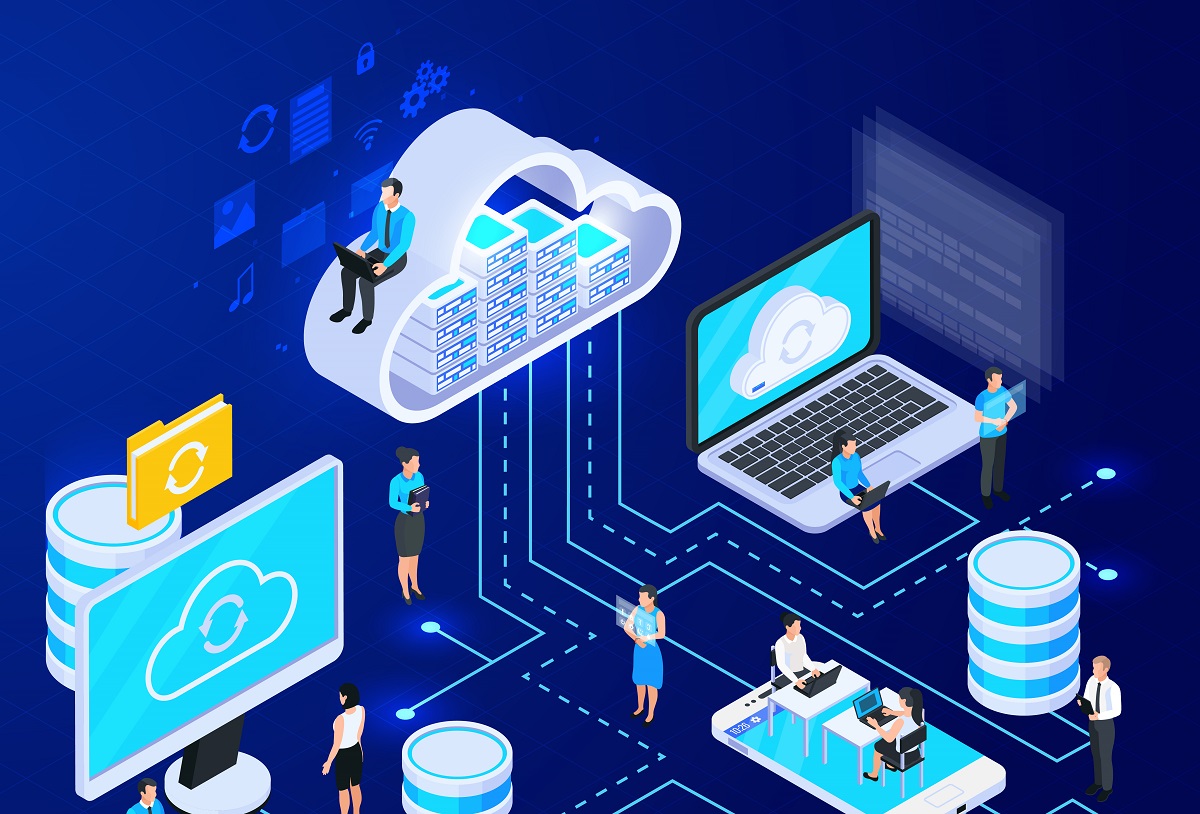Impact of Cloud Computing on Development
In the dynamic world of technology, cloud computing has emerged as a game-changer, revolutionizing how software and applications are developed, deployed, and managed. This article dives deep into the realm of cloud computing, highlighting its profound impact on software development. From its inception to real-world applications, we’ll explore the benefits, challenges, and innovative approaches it brings to the ever-evolving tech landscape.
Impact of Cloud Computing in Development
Cloud computing’s influence on software development has been nothing short of revolutionary. Developers now have access to scalable and flexible resources that have transformed the traditional development process. This impact can be seen in various aspects:
Accelerated Development Cycles
Cloud computing enables developers to rapidly build, test, and deploy applications. With on-demand access to resources, development cycles are significantly shortened. This agility empowers teams to bring products to market faster, gaining a competitive edge.
Cost Efficiency and Resource Optimization
Developers no longer need to invest in extensive hardware infrastructure. Cloud platforms offer pay-as-you-go models, reducing upfront costs and allowing businesses to optimize resource utilization. This democratization of resources benefits startups and established enterprises alike.
Global Collaboration and Accessibility
Cloud-based development fosters collaboration among geographically dispersed teams. Developers can seamlessly work on projects in real-time, regardless of their physical location. This accessibility enhances productivity and innovation.
Scalability and Elasticity
Cloud services provide unparalleled scalability, allowing applications to handle variable workloads. This elasticity ensures that software can seamlessly accommodate fluctuations in user demand, enhancing user experiences.
Enhanced Security Measures
Contrary to early concerns, cloud computing has evolved to offer robust security features. Cloud providers invest heavily in cybersecurity, often exceeding what individual organizations can achieve. This level of protection is crucial in safeguarding sensitive user data.
Continuous Integration and Deployment (CI/CD)
Cloud-based development aligns seamlessly with CI/CD practices. Automation tools and cloud resources enable automated testing, integration, and deployment, resulting in higher-quality software delivered at a rapid pace.
Cloud-Native Architecture: Shaping the Future
Cloud-native architecture is a concept gaining immense traction. It involves designing applications specifically for cloud environments, taking full advantage of cloud benefits. This approach fosters:
Microservices and Modularity
Cloud-native development promotes the use of microservices, where applications are broken down into smaller, independent components. This modular structure enhances maintainability, scalability, and fault isolation.
Containerization and Orchestration
Containers, like Docker, package applications and their dependencies, ensuring consistent deployment across various environments. Orchestration tools like Kubernetes manage these containers, automating scaling and management.
Serverless Computing
Serverless architecture abstracts server management, allowing developers to focus solely on code. This approach eliminates the need to provision resources manually and automatically scales applications based on demand.
Real-World Applications
The impact of cloud computing in development is evident across industries. Let’s explore a few compelling use cases:
Healthcare
Cloud-based electronic health record systems streamline patient information management, enabling secure data sharing among healthcare providers. This ensures timely and informed decision-making, ultimately improving patient care.
E-Commerce
Online retailers leverage cloud resources to handle peak shopping seasons seamlessly. Scalable infrastructure ensures uninterrupted service, enhancing customer experiences.
Financial Services
Banks and financial institutions utilize cloud solutions for data analysis, fraud detection, and customer relationship management. The cloud’s computational power enables quick insights and personalized services.
Gaming
Cloud gaming platforms deliver resource-intensive gaming experiences to a wider audience. Players can stream games without high-end hardware, democratizing gaming access.
Overcoming Challenges
While cloud computing offers remarkable advantages, challenges exist:
Security and Compliance
Storing sensitive data on remote servers raises security concerns. Ensuring compliance with regulations adds complexity to cloud adoption.
Vendor Lock-In
Migrating between cloud providers can be intricate, potentially leading to vendor lock-in. Careful architecture planning can mitigate this risk.
Latency and Connectivity
Real-time applications requiring low latency may face challenges due to network connectivity and potential bottlenecks.
FAQs
How does cloud computing benefit software development?
Cloud computing accelerates development cycles, optimizes costs, enables global collaboration, and enhances scalability and security.
What is the difference between traditional development and cloud-based development?
Traditional development relies on local infrastructure, while cloud-based development utilizes remote resources, offering scalability and accessibility benefits.
Is cloud-native architecture suitable for all applications?
Cloud-native architecture is particularly beneficial for applications with variable workloads, demanding scalability, and a need for rapid development cycles.
Are there industries where cloud computing is exceptionally impactful?
Yes, industries such as healthcare, e-commerce, finance, and gaming have witnessed significant positive impacts from adopting cloud solutions.
What security measures should developers consider in cloud-based development?
Developers should prioritize encryption, access control, and regular security audits to ensure data protection in cloud-based applications.
How does serverless computing differ from traditional server-based approaches?
Serverless computing abstracts server management, automatically scaling applications. Traditional server-based approaches require manual provisioning and management.
Conclusion
The impact of cloud computing in development cannot be overstated. It has transformed the way software is created, deployed, and managed. From accelerated development cycles to innovative cloud-native architectures, the tech landscape continues to evolve under the influence of cloud computing. Embracing its benefits while addressing challenges, developers pave the way for a more agile, accessible, and secure future.
SOURCEBAE: HIRE JAVA DEVELOPER





